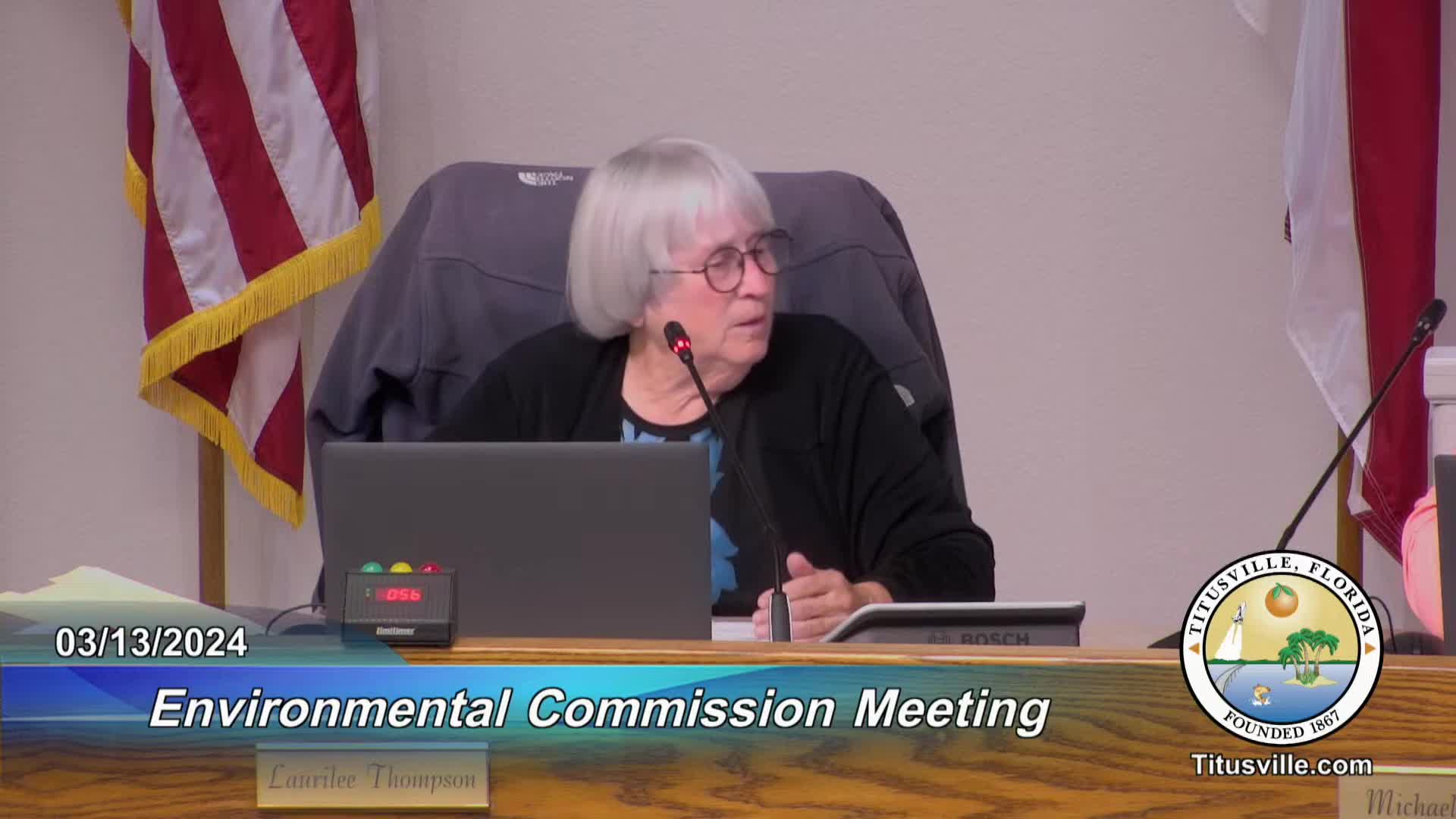Commission Proposes Merging Native Plant Lists for Enhanced Development Incentives
March 14, 2024 | Titusville, Brevard County, Florida

This article was created by AI summarizing key points discussed. AI makes mistakes, so for full details and context, please refer to the video of the full meeting. Please report any errors so we can fix them. Report an error »

The Titusville Environmental Commission convened on March 13, 2024, at 5:30 p.m. to discuss the integration of plant lists for local development projects. The meeting focused on merging two existing lists of plants to enhance environmental sustainability in the area.
The discussion began with a member expressing satisfaction with the current list, stating it was a significant improvement over previous versions. They emphasized the need to avoid further delays and unnecessary expenditures on the list, suggesting that the commission should proceed with the existing framework.
Another member proposed a strategy to combine the two lists effectively. They suggested including both native plants that are vouchered in Brevard County and regional Florida natives that are not vouchered. Additionally, they recommended incorporating exotic non-natives that do not appear on federal or state noxious weed lists. The member highlighted the importance of using Low Impact Development (LID) practices and maintaining a maximum of 80% native plants and trees in development projects.
The conversation underscored the value of the metadata included in the lists, which provides essential information for architects and landscape architects in selecting appropriate plants for specific soil types. The member stressed that this information should not be overlooked and should be integrated into the final merged list.
Another commission member supported the proposal, agreeing that the commission should take ownership of the merging process without seeking additional funding or external assistance. They noted that the ongoing discussions had become repetitive and that it was time to move forward with the integration of the lists.
The meeting concluded with a commitment to merge the two plant lists, ensuring that the focus remains on promoting native species and sustainable practices in local development. The commission plans to take the necessary steps to finalize the list and implement the proposed changes in future projects.
The discussion began with a member expressing satisfaction with the current list, stating it was a significant improvement over previous versions. They emphasized the need to avoid further delays and unnecessary expenditures on the list, suggesting that the commission should proceed with the existing framework.
Another member proposed a strategy to combine the two lists effectively. They suggested including both native plants that are vouchered in Brevard County and regional Florida natives that are not vouchered. Additionally, they recommended incorporating exotic non-natives that do not appear on federal or state noxious weed lists. The member highlighted the importance of using Low Impact Development (LID) practices and maintaining a maximum of 80% native plants and trees in development projects.
The conversation underscored the value of the metadata included in the lists, which provides essential information for architects and landscape architects in selecting appropriate plants for specific soil types. The member stressed that this information should not be overlooked and should be integrated into the final merged list.
Another commission member supported the proposal, agreeing that the commission should take ownership of the merging process without seeking additional funding or external assistance. They noted that the ongoing discussions had become repetitive and that it was time to move forward with the integration of the lists.
The meeting concluded with a commitment to merge the two plant lists, ensuring that the focus remains on promoting native species and sustainable practices in local development. The commission plans to take the necessary steps to finalize the list and implement the proposed changes in future projects.
View full meeting
This article is based on a recent meeting—watch the full video and explore the complete transcript for deeper insights into the discussion.
View full meeting